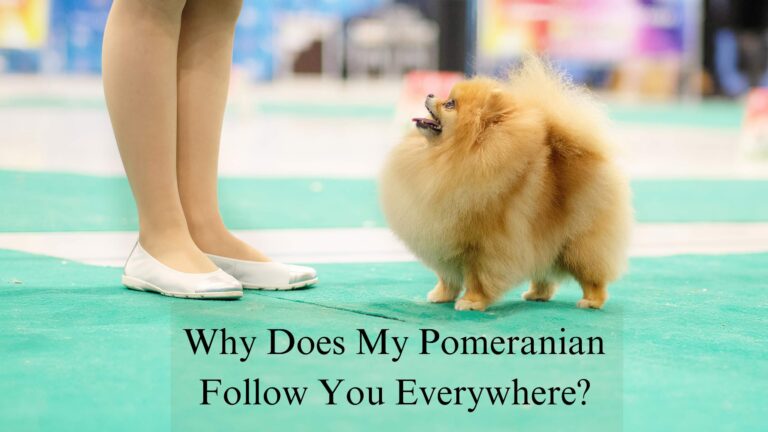Curious about when those lively Boston Terriers finally settle down? Wonder no more! The journey to a calm and composed Boston Terrier is as unique as each furry friend. These pint-sized powerhouses, with their floppy ears and playful spirits, capture hearts far and wide. But when does the bouncing energy give way to tranquility?
In simple terms, Boston Terriers typically start calming down around two to three years of age. Just like humans, they go through stages of development and maturity. The secret to unlocking their inner calmness lies in consistent training, socialization, and a sprinkle of patience. Picture clear rules, boundaries, and loving guidance as the keys to the serene kingdom.
Join us on a quest to discover when Boston Terriers calm down, appreciating the distinct journey of each playful companion. With proper care, a supportive human pack, and a sprinkle of love, these spirited dogs find their balance and become the calm and content beings we all adore. Get ready to witness the transition from lively to serene, as we explore the delightful world of Boston Terriers and their journey to calmness!
Ages Stages of Boston Terrier Calmness
If you’re a proud Boston Terrier owner, understanding your furry friend’s life stages is crucial for their well-being and finding moments of calm. Let’s explore these stages together in an easy-to-follow guide:
Puppyhood (0-6 months)
Puppies are like little energy bundles during this time! They need lots of attention and play. Training and socializing your puppy now can help them learn good behavior and calm down when needed. House Training a Boston Terrier Puppy.
Adolescence (6-12 months)
As your Boston Terrier pup grows, they enter the teenage phase. Independence and testing limits become their new thing. Keep up with training, offer mental challenges, and give them plenty of opportunities to release that playful energy.
Young Adulthood (1-3 years)
Here comes the peak of energy! Your Boston Terrier might be full of life and playfulness. Regular exercise and fun activities will help them burn off that energy and learn to calm down naturally.
Middle Age (4-7 years)
In these years, Boston Terriers might slow down a bit and show signs of aging. Keep them active with regular exercise and a balanced diet to support their health and help them calm down when it’s time to relax.
Senior Years (8+ years)
As seniors, Boston Terriers might become less energetic. Adjust their routines to match their needs, and regular vet check-ups ensure their health. Understanding their changing energy levels is key to helping them stay calm and content.
Factors Influencing a Calm Boston Terrier
Achieving calmness in Boston Terriers involves considering several key factors that play a crucial role in their overall demeanor.

Training, Socialization, and Guidance
Proper training, socialization, and consistent guidance are fundamental in shaping a Boston Terrier’s behavior and promoting calmness. Establishing clear boundaries and employing positive reinforcement techniques help them comprehend expectations and develop good manners.
Age and Maturity
The journey to calmness is influenced by age and maturity. As Boston Terriers grow older, they naturally gain more emotional stability and self-control. It’s important to note that individual dogs may mature at varying rates, necessitating patience and the provision of appropriate guidance.
Physical and Mental Well-being
Achieving overall balance and calmness hinges on the physical and mental well-being of Boston Terriers. Regular exercise, coupled with mental stimulation and a nutritious diet, contributes significantly to their overall health. This approach helps channel their energy in positive ways, fostering a calm and contented disposition.
Tips for a Calm Boston Terrier
To ensure a joyful and balanced companion, it’s crucial to manage your Boston Terrier’s energy effectively. Here are some tips to achieve this:

Exercise and Play
Begin by providing 30-60 minutes of daily exercise, adjusting the intensity based on your dog’s age. Engage in short walks, play fetch, and encourage safe yard activities. Rotate their toys regularly to keep them mentally stimulated, and consider using food puzzle toys for added engagement.
Training Techniques
Implement positive reinforcement using treats and praise to reinforce good behavior. Consistency is key, so make sure everyone in the household uses the same commands and rewards. Keep training sessions short and fun. Work on basic commands like sit, stay, come, down, and heel. Use treats to guide them and practice walking nicely on a leash. Games like fetching a ball reinforce training.
Creating Routine and Structure
Establishing a routine is vital for Boston Terriers. Set fixed schedules for meals, potty breaks, playtime, training, and walks. Consistency in daily activities provides a sense of security for your pet. Follow a well-balanced diet as recommended by your vet, maintaining set feeding times and controlling treats to ensure stable energy levels and mood.
Manage Boston Terrier Energy Level
Maintaining an energetic yet well-behaved Boston Terrier involves a combination of physical and mental stimulation. Aim for 30-60 minutes of daily exercise, adjusting based on age. Balance activities that engage their body and mind, such as training sessions and fetching games. Tailor activities to suit their age group, ensuring a well-rounded routine that keeps them content and energized.
Getting Expert Help
If you encounter behavior issues, seeking professional help is essential. Consult your vet for health-related concerns and a certified dog trainer for behavioral troubles. Whether it’s aggression, chronic anxiety, destructive habits, house training struggles, disobedience, or hyperactivity, professional guidance can address these issues and enhance your Boston Terrier’s overall well-being.
Conclusion
Boston Terriers are energetic dogs that thrive on patience, training, and ample exercise. As lively puppies, they’re full of excitement, gradually becoming even-tempered adults with age.
To foster calmness, understanding individual factors is key. By embracing patience, providing a supportive environment, and comprehending the factors influencing calmness, Boston Terriers can find their unique inner balance. Love and guidance play pivotal roles in this journey, so celebrate their playful nature and witness their transformation into well-rounded companions.
Creating structure through routine and training is crucial. Consistency in feeding, potty breaks, training, and exercise is vital. Utilize positive reinforcement, adapting methods to your dog’s personality. Remember, patience is essential for progress.
If persistent or problematic behaviors arise, seek professional advice from a vet or dog trainer. They offer tailored guidance to steer your Boston Terrier in the right direction. Cherish the bond, enjoy the journey, and with a patient, loving approach, watch your Boston Terrier mature into a happy, well-behaved companion.
Best Dog Beds for Boston Terriers
FAQs
Yes, Boston Terriers generally calm down with age, becoming more relaxed and less energetic as they mature.
Boston Terriers typically begin to calm down around 1 to 2 years of age, as they mature and their energy levels naturally decrease.
Boston Terriers typically mellow out around 2 to 3 years of age, as they mature and become less hyperactive.
Boston Terrier puppies usually start to calm down around 6 months to 1 year of age as they mature and their energy levels decrease.
Boston Terriers can be hyper due to their high energy levels and playful nature. Providing regular exercise, mental stimulation, and proper training can help manage their hyperactivity.
Yes, Boston Terriers are known for their energetic and lively nature. They are a playful and spirited breed.
Yes, Boston Terriers are generally active dogs. They have a moderate level of energy and enjoy playtime and exercise, but they are not overly hyperactive.
Boston Terriers are naturally energetic dogs, but hyperactivity can be due to factors like age, lack of exercise, insufficient mental stimulation, or the need for attention and training.








